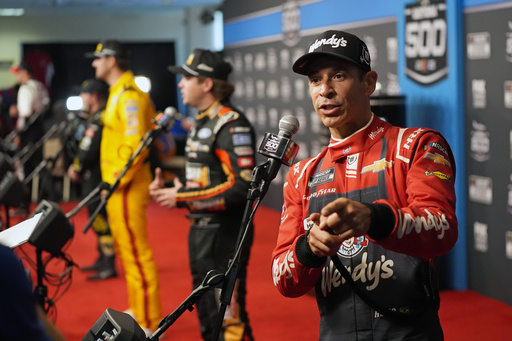
DAYTONA BEACH, Fla. — The Indianapolis 500 and the Daytona 500 stand as monumental events in their respective racing calendars, drawing attention and excitement from fans for over a hundred years. The Indianapolis 500, with its rich traditions and iconic milk-drinking celebration, complements the Daytona 500, heralded as NASCAR’s season starter, played out under the bright Florida skies at the historic site known as the “birthplace of speed.”
Both races are etched in the minds of even the most casual sports enthusiasts, easily recognizable with their connections to fast cars, extensive fanfare, and a raucous atmosphere created by crowds exceeding 100,000 that revel in the celebrations at Indy’s Snake Pit and Daytona’s Tent City.
Despite their similarities, they embody vastly different styles of racing. “They’re two completely different concepts of racing, and many people may not fully grasp the distinctions,” observed Juan Pablo Montoya, a two-time Indy 500 champion who has competed in the Daytona 500 seven times.
Montoya, among a select group of elite drivers who have navigated both races, highlights the uniqueness of each event. This year’s Daytona 500 features several drivers with experience in both realms, including seven-time NASCAR champion Jimmie Johnson, AJ Allmendinger, and Kyle Larson, along with four-time Indy 500 champion Helio Castroneves, who is making his Daytona 500 debut. Castroneves seeks to become the third driver ever to claim victories in both iconic races, following the footsteps of legends A.J. Foyt and Mario Andretti.
During the race, Castroneves will benefit from drafting strategies alongside his teammates at Trackhouse Racing. “The main distinction is that both racing formats demand unique strategies to survive,” Montoya elaborated. “In NASCAR, your success hinges not just on your own efforts but also on your teammates. Being close to teammates at critical moments can significantly influence the outcome.”
Several drivers who are well-acquainted with tackling the challenges of both racing events shared their insights. Jimmie Johnson, a two-time Daytona 500 victor and the 2022 Indy 500 rookie of the year, remarked on the stark contrasts in car dynamics between the two races. “The way the cars respond in the draft is vastly different. As Helio gains experience, it’ll be interesting to see how he adapts. In IndyCar, the draft’s effect is remarkable, but in stock cars, it doesn’t carry as much weight; it’s reliant on the push from behind.”
Kyle Larson reflected on the vibrant atmospheres, noting the unique crowds at both events. “They both have incredible atmospheres but are distinctly unique in their own rights. Indy’s infield offers the Snake Pit, while Daytona’s features diverse camping setups. The energy from the crowd at Indy feels a bit closer due to the grandstands being packed, whereas at Daytona, it’s a huge gathering of racing enthusiasts. Indy has an added historical gravitas, making it a bit different from the Daytona 500.”
Additionally, Larson discussed the technical challenges drivers might face, particularly with braking systems. “The less effective brakes in stock cars may present issues during green-flag pit cycles. At Indy, the track configuration allows for tighter racing lines, whereas Daytona offers more opportunities for overtaking. This dynamic could present occasional challenges for Castroneves, but I believe he’ll adapt quickly.”
AJ Allmendinger also weighed in on the differences in racing styles between the two events. “Daytona’s pack racing keeps drivers consistently side-by-side, while at the Indy 500, there’s less of that constant proximity. The precision needed in each scenario is critical, and making mistakes carries high consequences in either race,” he said. “However, the stress of not racing alongside others at Indy makes it somewhat easier, despite running faster overall.”
Allmendinger expressed the universal appeal of both races. “These two events resonate even with those outside the motorsports world. They represent some of the most significant races globally, alongside events like Monaco or Le Mans.” He fondly recalled the emotional highs that come with the lead-up to the Daytona 500, making comparisons with the atmosphere at the Indy 500.
Having previously secured third place in the 2009 and 2017 Daytona 500s and finishing seventh in the 2013 Indy 500, Allmendinger’s experiences highlight the intensity and prestige of competing in these monumental races.

